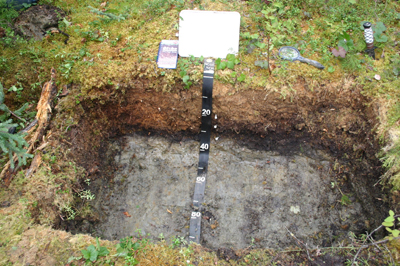Soil Science Society of America
5585 Guilford Road • Madison, WI 53711-5801 • 608-273-8080 • Fax 608-273-2021
www.soils.org
Twitter | Facebook
NEWS RELEASE
Contact: Hanna Jeske, Associate Director of Marketing and Brand Strategy, 608-268-3972, hjeske@sciencesocieties.org
How is carbon “stored” in soils of the Arctic and Subarctic?
July 2, 2018 – Carbon is a key element, weaving its way through the survival of all living things. The Soil Science Society of America (SSSA) July 1 Soils Matter blog explains how carbon gets into soil, and how climate change is making a difference.
 “Carbon moves readily between atmosphere, oceans, and terrestrial environments in response to natural processes and human activities,” says blog writer Mark Clark. Clark is a Certified Professional Soil Scientist and former NRCS Alaska soil scientist. “Massive amounts of carbon are stored in soil and plants, oceans, and in geologic formations such as coal, oil, and gas.”
“Carbon moves readily between atmosphere, oceans, and terrestrial environments in response to natural processes and human activities,” says blog writer Mark Clark. Clark is a Certified Professional Soil Scientist and former NRCS Alaska soil scientist. “Massive amounts of carbon are stored in soil and plants, oceans, and in geologic formations such as coal, oil, and gas.”
The Subarctic and Arctic regions are unique in their soils. “Soils in the Arctic and Subarctic contain nearly half of the planet’s terrestrial carbon,” Clark says. “They entomb carbon within the permanently frozen substrate soils. In addition, the thick organic mats common to these soils stores more carbon.”
“A warming climate is quickly changing landscapes of the Arctic and Subarctic as permafrost melts and soils change from net carbon sinks to atmospheric sources of carbon dioxide.”
To read the entire blog post, visit https://wp.me/p3Rg6r-ox.
Follow SSSA on Facebook at https://www.facebook.com/SSSA.soils, Twitter at SSSA_Soils. SSSA has soils information on www.soils.org/discover-soils, for teachers at www.soils4teachers.org, and for students through 12th grade, www.soils4kids.org.